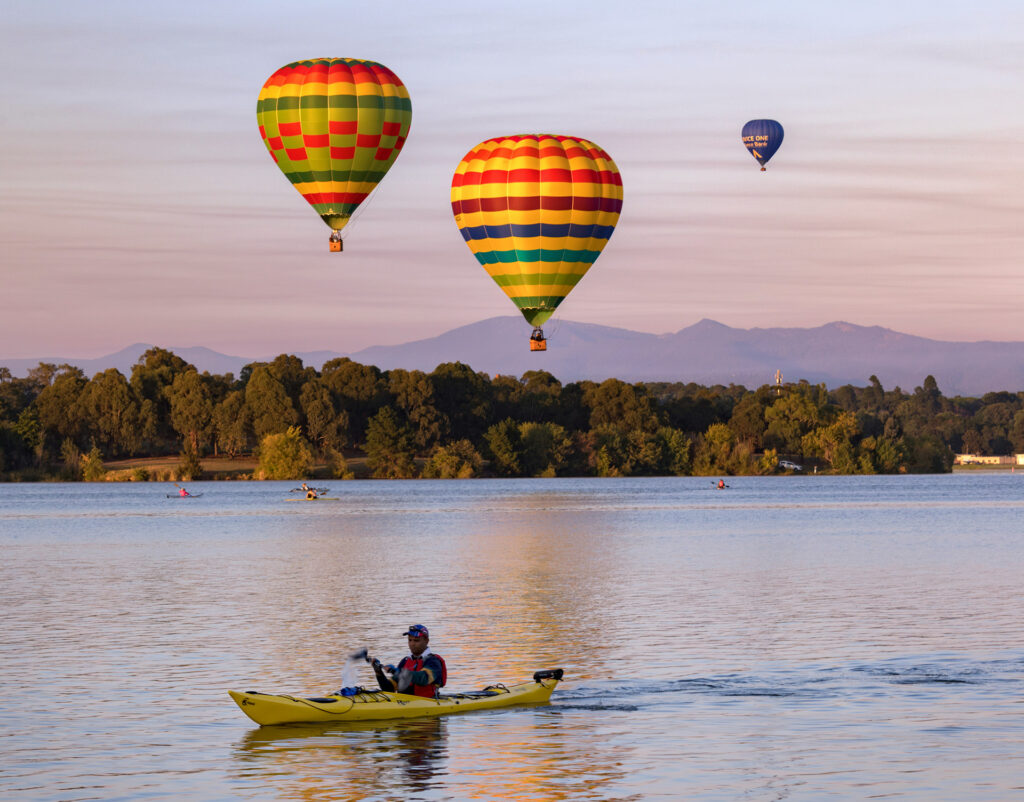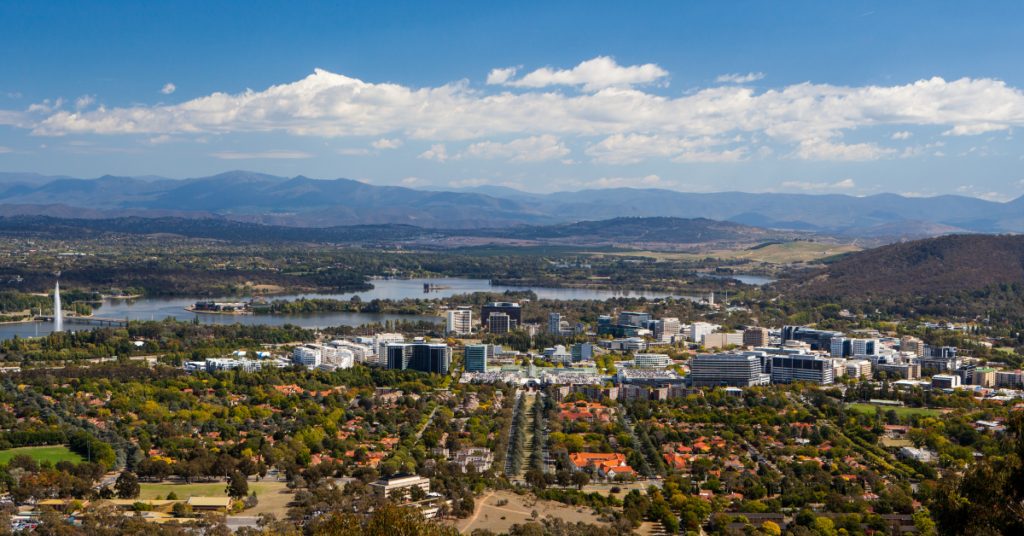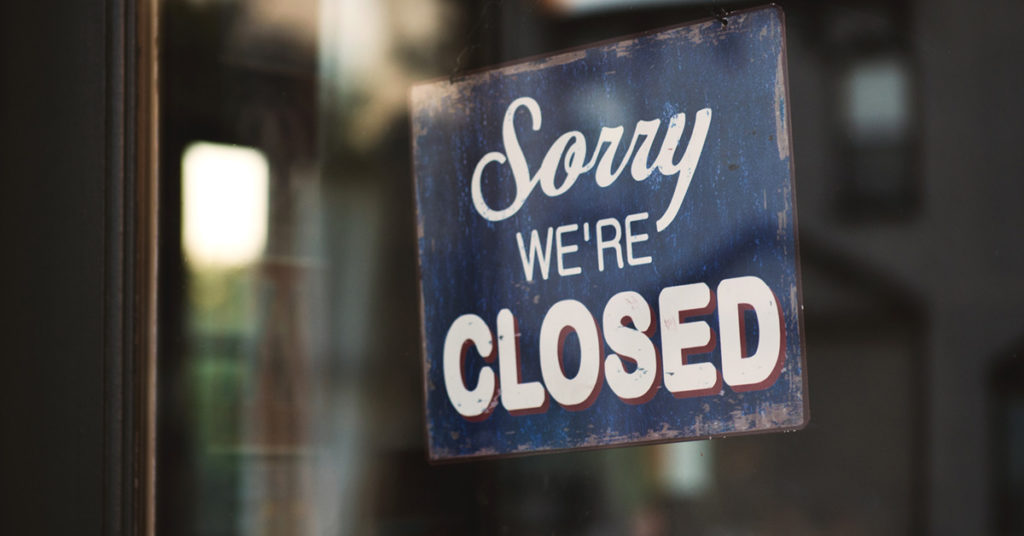Since the purpose-built Museum building was officially opened in 2001, the National Museum of Australia (NMA) has inspired and piqued the interest of thousands of visitors to the Nation’s capital.
The NMA is home to an incredible collection, including the heart of legendary racehorse Pharlap and Holden’s Prototype Car No. 1, and always has exciting exhibitions either on display or in the pipeline, but some people say that the biggest object in their collection is the building itself.
Every Canberran would recognise the iconic ‘rollercoaster’ that loop-de-loops from the building’s entrance to a wave-like structure at the far end of the carpark, but did you know this is known as the ‘Uluru Line’, and it represents the thread between Australia’s spiritual heart – Uluru – and the political capital of Australia – Canberra? In fact, if you could follow the red line, you would end up crossing the desert and arriving in Uluru’s shadow. The building and architecture tour has become popular with locals and tourists alike.
Despite the tough year all attraction operators have dealt with nationally in 2020, the NMA’s Head of Commercial Operations and Tourism, Liz McRae, tells me that the team at the Museum were able to complete a lot of useful research, planning and engagement during the 70 days they were forced to close their doors to the public.
“During January and the smoke haze over Canberra, the NMA became a bit of a community hub where people could come to take a break from the smoke and entertain kids who had fled from the coast,” said McRae.
“Then we closed in March and during this time we were able to do some great things for all of our audience groups online and bring some new capabilities into the team/s.
We participated in virtual trade shows and local industry meetings to make sure we were staying up to date on what other attractions and the broader industry were doing, and obviously also spent time planning how the Museum would operate once we opened again and what activities would need to be modified to make sure people felt safe coming back.”
Liz says that since reopening on the 2nd of June, the Museum has been able to modify and fine-tune their practices to make sure they’re meeting their visitor’s expectations. One aspect that has really helped the NMA operate is their huge entrance and spaces.
“We’re lucky that we have some really big spaces which helped to get people back to the Museum at a more conservative capacity than the regulations required. I know some of our colleagues had more challenges with their entry points being a smaller capacity, we were fortunate to be able to get people into the building and then filter them through different areas including new forecourt garden and our vast lakeside location,” said McRae.
“We have been lucky that we haven’t needed to turn anyone away, and now we are seeing some more programming come back. We’ve had school groups, we’ve had a few events including school formals, and we’ve been able to test a lot of our systems and practices. We have kept responding to our visitor feedback and making changes as required.”
We encourage all our visitors to book ahead for the Endeavour Voyage exhibition and arrive during their allocated time, but we’re also absolutely taking walk-ups over summer, and while working within our capacities, we don’t feel like we will be limited by it in the summer period.”
Right now at the NMA, visitors can come in for free and view two great exhibitions; Endeavour Voyage: The untold stories of Cook and First Australians and A Portrait of Australia in partnership with Australian Geographic, which will both be running until autumn next year.
“In February we also open an Indigenous textiles and print exhibition called PIINPI which will run through until August, and in March we open another new show based on the acquisition of the Trevor Kennedy collection,” said McRae.
“Later next year we have a blockbuster from the British Museum which is our Ancient Greeks exhibition, which will be popular across the full tourism market, and that will run from December until May 2022.”
With such exciting plans in the works, and tourism in Canberra on the rise, Liz believes that now is the time for communication and collaboration.
“The main thing is that we are all in this together. I know that I’ve been reaching out to people I met through the NCAA and other networks and asking questions as well as sharing our experience.
It’s not about who’s doing things perfectly, because honestly, I don’t think anyone has done it perfectly this year. But we should be asking each other questions and getting engaged in the conversation so we can talk about our common challenges.
We have such an incredible industry in Canberra, and we should be leveraging that network, especially when times are tough, and the only way we’re going to come out of this together, is if we work closely together and keep the conversation going.”


